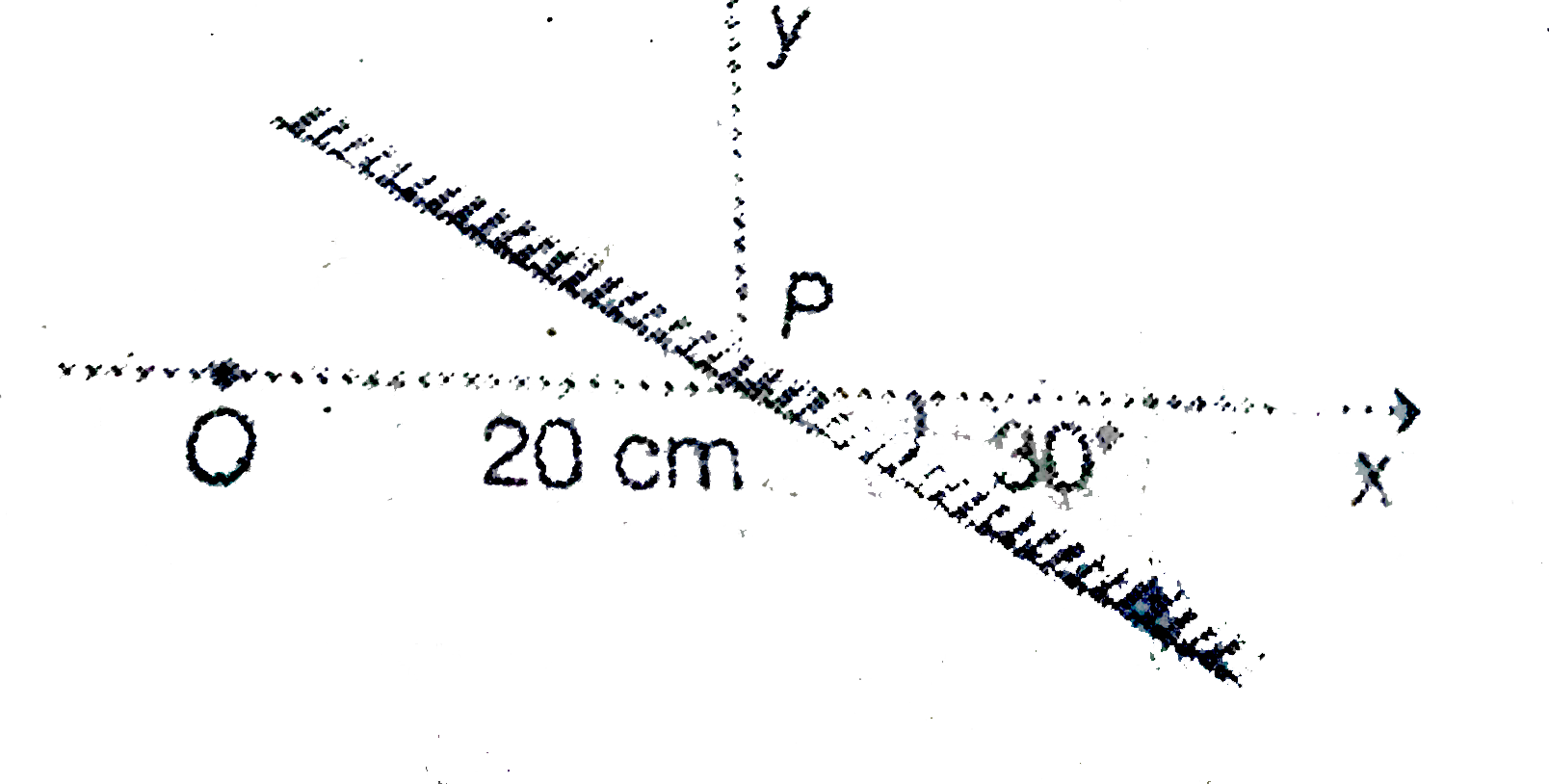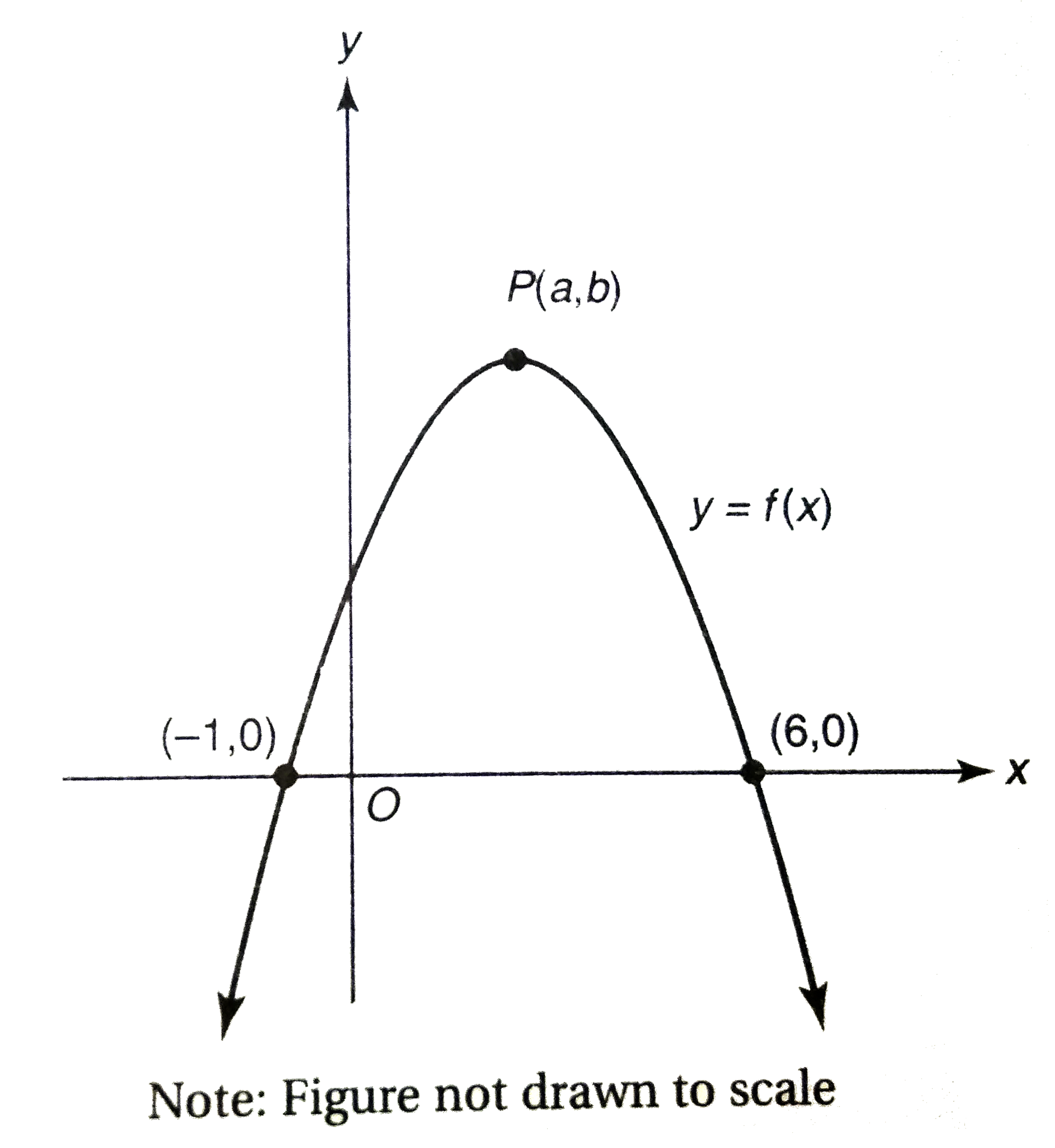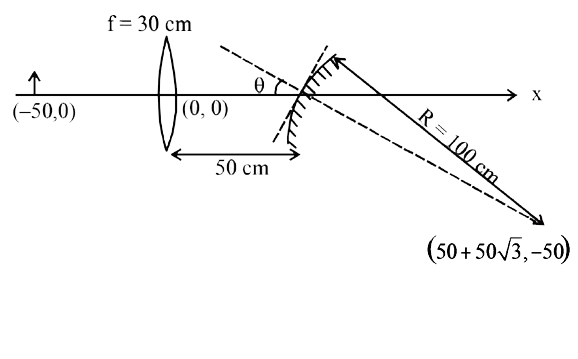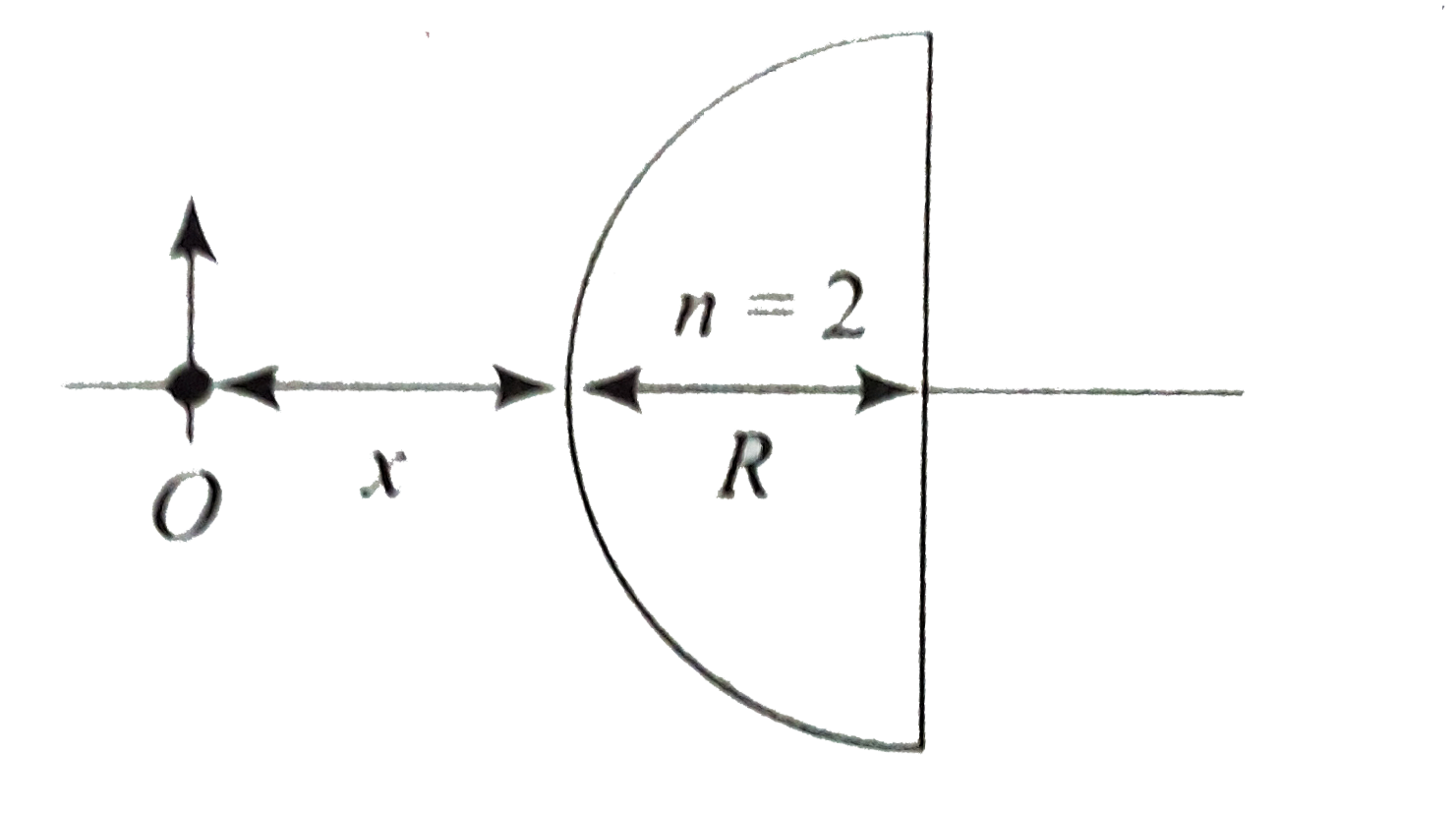Consider the point P as the origin and time OP as the x-axis in the situation shown in the figure. Which of the following represents the coordinates of the image of the point object O. (Take OP=20cm)

(20cm,0cm)
(10cm,10√3cm)
(−10cm,10√3cm)
(10cm,−10√3cm)
The correct Answer is:C
Step by step video & image solution for Consider the point P as the origin and time OP as the x-axis in the situation shown in the figure. Which of the following represents the coordinates of the image of the point object O. (Take OP = 20 cm) by Physics experts to help you in doubts & scoring excellent marks in Class 11 exams.
Updated on:21/07/2023Topper's Solved these Questions
- RAY OPTICSBOOK - DC PANDEY ENGLISHCHAPTER - RAY OPTICSEXERCISE - A. Only one option is correct (JEE Advance)
73 Videos
- RAY OPTICSBOOK - DC PANDEY ENGLISHCHAPTER - RAY OPTICSEXERCISE - B. More than one option is correct
20 Videos
- PROPERTIES OF MATTERBOOK - DC PANDEY ENGLISHCHAPTER - PROPERTIES OF MATTEREXERCISE - Integer
8 Videos
- ROTATIONBOOK - DC PANDEY ENGLISHCHAPTER - ROTATIONEXERCISE - (C) Chapter Exercises
39 Videos
Similar Questions
Locate the image of the point object O in the situation shown in figure. The point C denotes the centre of curvature of the separating surface.

View SolutionIf O be the origin and OP=r and OP makes an angle θ with the positive direction of x-axis and lies in the XY plane find the coordinates of P.
View Solution
Knowledge Check

The graph of a quadratic function f is shown in the above figure. If f(x)≤b for all values of x, which of the following could be the coordinates of point P?A(1.5,2)B(2.25.3.5)C(2.5,4)D(2.75,5)O is the origin and P is point at a distance of 3 units from origin. If direction ratios of OP are <1,−2,−2>, then the coordinates of P are
A(1,−2,−2)B(3,−6,−6)C(13,−23,−23)D(19,−29,−29)
The point P(3, 4) is reflected to P' in the x-axis, and O' is the image of O (the origin) when reflected in the line PP'. Write :
the co-ordinates of P' and O',
View SolutionA small object is placed 50 cm to the left of a thin convex lens of focal length 30 cm. A convex spherical mirror of radius of curvature 100 cm is placed to the right of the lens at a distance of 50 cm. The mirror is tilted such that the axis of the mirror is at an angle θ=30degree to the axis of the lens, as shown in the figure
If the origin of the coordinate system is taken to be at the centre of the lens, the coordinates (in cm) of the point (x,y) at which the image is formed are

View SolutionA point P is reflected in the origin. Co-ordinates of its image are (-2, 7).
Find the co-ordinates of the image of P under reflection in the x-axis.
View SolutionSee the following figure. Which of the object(s) shown in O2 figure will not form its image in the mirror.

View SolutionConsider a transparent hemispher (n=2) in front of which a small object is placed in air (n=1) as shown in figure.

Q. For which value of x, of the following , will the final image of the object O be virtual?
View SolutionThe point P(3, 4) is reflected to P' in the x-axis, and O' is the image of O (the origin) when reflected in the line PP'. Write :
the perimeter of the quadrilateral POP'O'
View Solution
